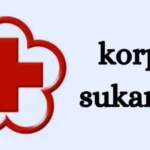In the realm of spinal health, disc extrusion poses a significant challenge for many individuals. It’s a condition that can drastically impact one’s quality of life, yet it’s often misunderstood.
This blog post shares true stories of patients who overcame disc extrusion. It offers insights, hope, and advice for others on a similar journey.
Understanding Disc Extrusion
Disc extrusion occurs when the soft inner gel of a spinal disc pushes through a tear in the tougher outer layer. It can cause severe back pain, numbness, or weakness. It often presses against nearby nerves.
Recognizing the symptoms is crucial for early intervention. They usually cause sharp pain in the back or neck. They may also cause radiating pain in the arms or legs, and muscle weakness.
Initial Reactions and Coping Mechanisms
Coping mechanisms play a crucial role in the early stages. Patients often find comfort in learning about their condition. It helps reduce fear of the unknown.
Support from family and friends is invaluable during this time. Sharing experiences with those in similar situations can help. It can provide comfort and encouragement.
Mental health support should not be overlooked. Counseling can help patients manage anxiety and depression from the diagnosis. Mindfulness and stress-reduction techniques can help maintain a positive outlook.
Exploring Treatment Options
Once a diagnosis is made, exploring treatment options becomes the next step. Non-surgical treatments are often the first line of defense. These can include:
- physical therapy
- pain medications
- lifestyle changes
Physical therapy aims to strengthen the spine’s supporting muscles. This can ease symptoms. For some patients, more aggressive treatments may be necessary. Surgical intervention could be considered if non-surgical methods don’t provide relief.
Minimally invasive procedures, like microdiscectomy, are now very popular. They have shorter recovery times and high success rates. It’s crucial to discuss all potential risks and benefits with a healthcare provider.
When dealing with disc extrusion, find pain management doctors. These specialists can fully assess your condition. They will then create a tailored treatment plan and pain management.
Physical Rehabilitation Journeys
Physical rehabilitation is a pivotal part of recovery for many patients. It often begins with gentle exercises aimed at restoring movement and flexibility.
Over time, patients build strength in their core and back muscles. This supports the spine and reduces pressure on the affected disc.
Consistency is crucial for success in rehabilitation. Patients who adhere to their prescribed exercises tend to see better outcomes.
Setting realistic goals and celebrating small milestones can keep motivation high. Rehabilitation can be tough. But, it is worth it. It reduces pain and improves mobility in the long run.
Emotional and Psychological Challenges
Dealing with a chronic condition like disc extrusion presents emotional and psychological challenges. Patients often feel frustrated or helpless, especially with slow progress or setbacks. Acknowledging these feelings is important, as is seeking help when needed.
Building a strong support network is beneficial. Family, friends, and support groups can offer encouragement and understanding during difficult times. Online communities also serve as a resource for sharing experiences and advice, fostering a sense of belonging.
Understanding How to Overcome Disc Extrusion
Disc extrusion is tough, but, real patient stories show the strength and will need to overcome it. By understanding the condition, exploring treatments, and building support, people can recover.
If you need more info or support, consider two options. You could connect with healthcare professionals who specialize in spinal health. Or, you could join online communities about disc extrusion.
For more helpful tips, check out the rest of our site today.







